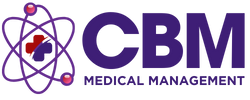Step-by-Step Insights into the Aetna Credentialing Process
Backed by CBM Medical Management‘s 40 years of experience in Revenue Cycle Management and Practice Startup, this guide is your gateway to understanding the Aetna credentialing process—an essential step for healthcare providers aiming to join the Aetna network. Whether you’re just starting your practice or looking to expand your patient base, becoming a credentialed provider with insurance networks like Aetna is crucial. But why is it so important? And more fundamentally, how does one successfully navigate this process?
Why Credentialing Matters
At its core, credentialing is the process by which insurance networks verify that a healthcare provider meets all required standards and qualifications to deliver care to their members. It’s not just a formality; it’s a cornerstone of trust and quality in healthcare. Without undergoing and passing the credentialing process, providers cannot legally bill an insurance company for services rendered. Thus, credentialing opens doors to new patients and ensures your practice’s growth and viability.
The Aetna Credentialing Process Unveiled
Understanding the Aetna credentialing process can seem daunting at first glance. However, with the right information and guidance, it can be navigated successfully. Here’s what you need to know:
- Application Submission: The journey begins by submitting an application to Aetna, either online or by mail. This step involves providing comprehensive information about your qualifications, clinical experience, and professional references.
- Documentation Review: Aetna then reviews the submitted documents, ensuring that all information is accurate and meets their standards. This may include a review of your educational background, residency, any special certifications, and more.
- Primary Source Verification: Aetna conducts a thorough verification of your credentials. This includes checking with the primary sources that issued your licenses and certifications, to validate their authenticity.
- Committee Decision: Once all information is verified, your application is presented to a credentialing committee. This group is responsible for making the final decision on whether to approve your credentialing.
- Notification: Finally, Aetna will notify you of the committee’s decision. If approved, you’ll be officially credentialed and can begin seeing patients under the Aetna network.
Remember, while the process may seem straightforward, each step requires meticulous attention to detail. Missing just one document or failing to accurately complete a single form can delay or even derail the credentialing process. That’s where expert credentialing services can make a significant difference, offering guidance and support through each step of the process.
Key Takeaways for a Smooth Credentialing Journey
- Be Prepared: Gather all necessary documentation before starting your application. This can save you time and prevent delays.
- Pay Attention to Details: Ensure all information you provide is accurate and complete. Errors or omissions can lead to unnecessary complications.
- Seek Expert Help: Consider leveraging credentialing services to guide you through the process. Their expertise can be invaluable, especially for those new to credentialing.
- Be Patient: Credentialing with Aetna can take several weeks, or in some cases, even months. Patience and persistence are key.
In closing, becoming credentialed with Aetna is a crucial step for healthcare providers looking to enhance their practice’s reach and serve more patients. While it might seem complex, understanding each phase of the process can help demystify it, setting you on a path to success. Remember, you’re not alone on this journey; help is always available, and your efforts will ultimately benefit your practice and the patients you serve.


